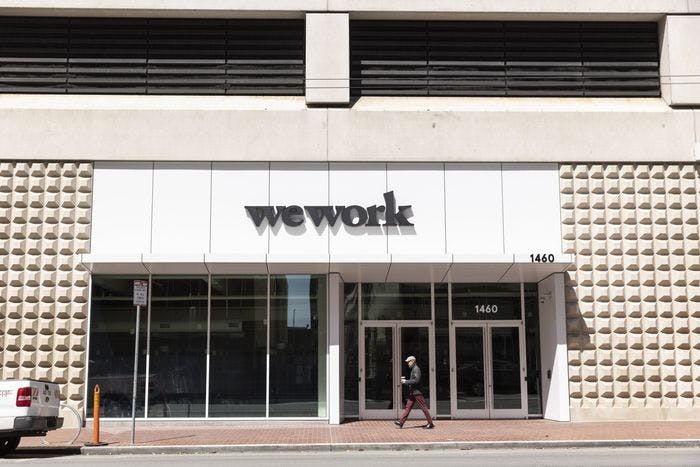Corporate Real Estate Metrics are Changing: Have You Updated Yours?



Until recently, a simple set of metrics was often enough to support basic decisions around corporate real estate space requirements.
By examining data like current headcount, hiring forecasts, and seat density (the square footage per seat required, based on an assumed employee/seat ratio of 1:1), you could work with a broker to identify real estate options that fit your budget and location preferences.
The world of work has changed, however.
With the pandemic accelerating a shift toward more dynamic working, real estate strategies are necessarily evolving to mirror that shift.
More and more as the office moves from a cost liability to an asset for business value creation, corporate real estate metrics are reflecting a change in the CRE function from cost manager to productivity enabler.
In this post, we’ll examine how compiling data to support a new, more robust set of metrics is paving the way to greater efficiency, more informed decisions, and better portfolio performance.
Powering your portfolio with data workflows
To track real-time portfolio information across various metrics, many companies are building and maintaining real estate data workflows.
Insights gleaned from these systems can be used to:
- Assess the health and efficiency of portfolios
- Support strategies at large
- Inform more discrete decision-making
Applying workflow data to traditional planning and budgeting initiatives, for example, does more than help determine how much you should budget for space against current headcount and hiring forecasts.
It also addresses important questions like:
When will our office reach capacity? Comparing hiring forecasts against occupancy percentages over time (based, for example, on the number of days per week an “average” employee visits the office) lets you gauge when or if capacity will be reached.
What’s the right mix of desks, meeting rooms, and open/collaborative spaces? Collecting information like sensor and desk booking data lets you track how often different types of spaces are being utilized.
Here are some other ways you can use data workflows to update your metrics and keep pace with the changing work world.
Identify savings
- Use capacity forecasts to discover excess space that won’t require renewal so you can downsize your footprint
- Lower your OpEx bill (and boost in-house employee interactions) by using attendance projections to close certain floors on certain days
Optimize solutions
- Make impactful lease renewal decisions by comparing occupancy percentage trends against space requirements, or by examining where most employees reside
- Drive employee engagement and in-person collaboration by determining what prompts the frequency and timing of office visits (think pizza parties or the attendance of certain employees, for example)
- Compare flexible office solutions like satellite suites or coworking passes against traditional leases by tracking costs, visit rates, and employee net promoter scores
Benchmark activity
- Monitor mandated office attendance by tracking employee visit frequency, then measure how in-person collaboration impacts productivity by comparing attendance rates against performance
- Benchmark your space-spend per employee against market standards by comparing metrics like cost per square foot/seat/occupied seat/employee/employee visit with similar companies
Sourcing your data
The data required to enable more impactful decisions and deploy fresh and timely real estate solutions can be pulled from a number of systems.
Here are four common sources.
1. Utilization data
Collect and centralize employee visit data from badge access systems, Wi-Fi providers, and desk booking solutions (note that certain providers—like Brivo, for example—do a better job than others at enabling data distribution).
2. Lease and capacity data
Pull and combine lease information—like rent schedules, lease terms, and capacity—with visit data to calculate office occupancy percentages.
3. Coworking data
Access reservation or booking data from external coworking spaces.
4. HR data
Gather and combine employee information with visit data to determine how attendance varies by worker location or department, for traveling vs local employees, and for contractors vs full-time personnel.
Benefits of automating your workflows
Many companies are home-growing their own workflows to compile key decision-making data.
Home-grown systems are one approach to updating corporate real estate strategies. But if you look to other departments within a company, you’ll find they often partner with external vendors to automate the extraction, transformation, and loading of data workflows.
Data movement platforms like Fivetran, for example, help sales teams get data from Salesforce into data warehouse solutions like Snowflake.
As a real estate leader, you too can benefit from automated data workflows to reduce costs and empower performance.
Not only does McKinsey estimate 60% of employees could save 30% of their time with workflow automation, statistics show managers spend an average of eight hours per week (or an entire work day) on manual data tasks.
Here are four key ways an automated data tool creates value:
1. Refreshes data daily, or even hourly (rather than weekly or monthly)
Integrated platforms automatically collect, clean, map, and report data, support multiple workflows (including workflows between systems), and shorten feedback loops for faster decision-making criteria.
2. Removes the potential for error
Manually mapping data—from badge swipe data to HR data, for example—is prone to human error. Not only do 34% of small and mid-sized companies say business automation decreases data entry errors, the best platforms map with 100% accuracy.
3. Reduces costs and frees up time
An automated tool costs less than paying (and managing) team members to handle workflow tasks and frees them to focus on other initiatives. Research shows workflow automation can save companies millions of dollars annually.
4. Supports more use cases for more stakeholders
Combining even more complex datasets unlocks additional value and insights that stakeholders beyond your real estate team (like HR, for example) can leverage for their workflows.
As savvy companies shift from managing CRE assets and expenses to enabling productivity, supply-demand balance, and employee engagement, metrics reflecting the value contribution of real estate are playing an increasingly integral role in their strategies.
Interested in learning more about how companies are unifying their real estate data for actionable decision-making? Reach out to FlexDesk.

